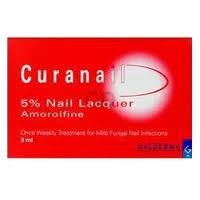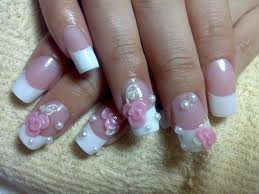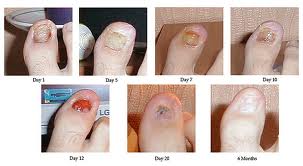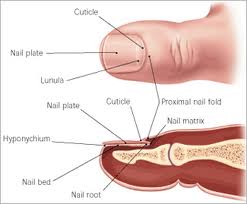Posts Tagged ‘fungus infections’
Curing Toenail Fungus with Prescription Drugs
Curing Toenail Fungus with Prescription Drugs
 Thanks to the advancements of modern medicine, curing toenail fungus with antifungal prescription medicines has become quite regular. As this is an infection that can spread easily, both throughout a person’s nails and through a populous, treating it has become of higher concern than it used to be.
Thanks to the advancements of modern medicine, curing toenail fungus with antifungal prescription medicines has become quite regular. As this is an infection that can spread easily, both throughout a person’s nails and through a populous, treating it has become of higher concern than it used to be.
What does an infected toenail look like?
The first and most common symptom to develop is a whitish or yellowish spot on your nail. Gradually this will cover your entire nail and you may eventually develop dark yellow and brown spots on the nail. Your nail will become thick and brittle as the fungus burrows deep into and underneath the nail on its quest to spread.
Infection occurs when people are exposed to the spores of the fungus. This can happen if you wander around barefoot, especially in areas that are particularly dirty, if your shoes are dirty or excessively damaged, and if you have particularly sweaty feet as heat and humidity are two key ingredients to a successful fungus growing environment.
Nails can become discolored due to trauma at the nail site, rubbing of the nail from the shoe and even if you have psoriasis. It is best to consult your doctor to determine what is causing the discoloration so that you can work together to come up with the best treatment.
Your doctor will take a sample of your nail and examine it under a microscope as well as have it sent to a lab for culture. The point of this exercise is to determine if it is a fungal or bacterial infection, and if it is a fungal infection, which type of fungus is it? The more you know, the more effective your treatment will be.
Topical Medications
A standard topical medication prescribed for toenail fungus infections is Ciclipirox, commercially known as Penlac. This comes as a nail polish, which needs to be applied daily to the infected nail to destroy the fungal infection. This can take several months to occur, so be patient.
Side Effects
Penlac has been known to cause skin irritation and itching where it has been applied.
Oral Antifungal Medications
Common prescriptives for eradicating toenail fungus infections are Lamisil, known as Terbinafine, Sporanox and Itraconazole. All of these drugs will run at least a twelve week course and it takes about nine months for the nail to grow out to fully replace itself.
All of these drugs come with the risk of side effects. If you suffer severe abdominal pain, headaches, dizziness or nausea, vomiting or jaundice in the skin or eyes or if your urine becomes particularly dark, you need to cease taking the medication and report this to your doctor right away.
None of these prescriptions are recommended for people with liver or heart disorders.
Thanks to the advancements of modern medicine, curing toenail fungus with antifungal prescription medicines has become quite regular. As this is an infection that can spread easily, both throughout a person’s nails and through a populous, treating it has become of higher concern than it used to be.
Are There Any Over the Counter Nail Fungus Treatments That Actually Prove Effective?
Are There Any Over the Counter Nail Fungus
Treatments That Actually Prove Effective?
As microorganisms go, fungi seem to be one of the strongest strains. It is much harder to kill them than bacteria and viruses. Dermatophyte, molds and yeasts can invade your nails and burrow deep into the nail itself, creating quite the armor of keratin for this marauding nail fungus. This makes treating onychomycoses much more difficult as even powerful antimycotic medications are not always entirely effective. So this begs the question of whether any of the available over-the-counter nail fungus treatments are effective and worth your time and money.
It is an unfortunate but true fact that very few topical treatments, whether prescription or over-the-counter, effectively treat and cure nail fungus infections.
Amorolfine
 A very popular over-the-counter topical onychomycosis drug that has been proven to be effective in clinical trials is amorolfine. This topical drug is available without a prescription in a handful of countries such as the United Kingdom and New Zealand. It’s marketing name is Loceryl. Amorolfine comes as a nail lacquer and is painted on the nail like a polish. This leaves the medicine free to penetrate the nail after it has dried and allows it to work over time, just as the nail fungus does. It is active up to a week, then may need to be re-applied.
A very popular over-the-counter topical onychomycosis drug that has been proven to be effective in clinical trials is amorolfine. This topical drug is available without a prescription in a handful of countries such as the United Kingdom and New Zealand. It’s marketing name is Loceryl. Amorolfine comes as a nail lacquer and is painted on the nail like a polish. This leaves the medicine free to penetrate the nail after it has dried and allows it to work over time, just as the nail fungus does. It is active up to a week, then may need to be re-applied.
Amorolfine works by inhibiting the cell membrane of the fungus. It is only effective on distal (or lateral) subungual onychomycosis. This leaves out proximal subungual onychomycosis and superficial white onychomycosis. Knowing which type of onychomycosis you have contracted is important if you wish to choose this over-the-counter method.
Amorolfine is not available in the United States as an over-the-counter remedy, which is inconsistent with other countries’ policies. There are a few side effects but they are mild and rarely occur with proper usage. A burning sensation while applying the lacquer for the first time has been reported, but it goes away quickly. As online pharmacies become more popular, it may be possible to obtain amorolfine in the U.S. via these services who sell it over-the-counter. However cost may be an issue as Loceryl (the commercial name for amorolfine) can cost around $100.00 – $150.00 for a single 5 ml tube.
There are several over-the-counter anti-fungals that are very successful at treating skin fungus problems but are not successful nail fungus treatments.
Lamisil is a decent oral onychomycosis treatment when it is prescribed in tablet form. However it also has an over-the-counter form of a topical cream, which has not proven effective at treating nail fungus.
Lotrimin (also known as clotrimazole) is very effective at treating athelete’s foot and jock itch but has not tested or been shown as a good nail fungus treatment.
Tolnaftate (or Tinactin) is the third over-the-counter product that although it is an excellent skin fungus treatment, does little or nothing for nail fungus.
A more promising solution in terms of over-the-counter medications is an anti-fungal nail liquid of undecylenic acid. Two different papers, one published in 1965 and the other published in 2008 examined the use of undecylenic acid in treating onychomycosis. The 2008 study shows a positive effect, however in these tests the undecylenic acid was combined with cyanoacylate and hydroquinone. There is no definite proof of undecylenic acid being effective on its own.
In the realm of alternative medicine, Tea Tree Oil, (Melaleuca alternifolia) has been shown to have some positive effect on nail fungus. As it is a naturally occurring fungicide and insect repellant, applying a 100% concentration of the oil to the infected area has been reported by small studies to be able to cure 20% of the cases followed. In two-thirds of the patients followed, using Tea Tree Oil caused an improvement in the appearance of the nail fungus infection. Another study compared the twice daily application of 100% Tea Tree Oil and a 1% solution of clotrimazole. The Tea Tree Oil appeared to be slightly more effective at clearing up the nail fungus problem.
Topical products or removing the nail
All of these topical products are applied and have been tested in cases where there has not been surgery to remove the nail before applying the product. It is possible that removing the nail before treatment, via surgical, mechanical or chemical method, may improve the chances of an over-the-counter nail treatment clearing up a nail fungus as this allows the medicine to get directly to the source of the infection. If you are considering surgery or any other form of nail removal as part of your onychomycosis treatment, please ask your surgeon or doctor for information about follow up nail fungus treatments.
If you do not wish to go the surgery route to solve your onychomycosis issues but do wish to cure your nail fungus, the best chance of success still lies with taking oral antifungal agents, which are currently only available with a doctor’s prescription.
Acrylic Nail Fungus Infections
Acrylic Nail Fungus Infections
 Many people choose to have acrylic nails applied to their hands. These are usually much stronger than the normal human nail and for those whose nails are very weak, it is an excellent solution to their problem of constant breakage or unattractiveness.
Many people choose to have acrylic nails applied to their hands. These are usually much stronger than the normal human nail and for those whose nails are very weak, it is an excellent solution to their problem of constant breakage or unattractiveness.
However there is the potential for a fungus to get in between the acrylic nail and the natural nail and find a great place to grow. Most salons practice excellent hygiene. However some don’t. Those are probable breeding and propagating grounds for the fungus. If you have your nails done, make sure you go to a salon that sterilizes their equipment between customers and uses antibacterial products.
Sometimes there is just nothing to be done. A fungus may just invade, no matter how hard you and your salon try. This can happen if a fungus has already attached itself to your nail, and you have an acrylic one put over the top, or if an item isn’t sterilized and it passes the fungus from one infected person onto you. A trained nail specialist is supposed to be able to recognize the symptoms of nail fungus infection and will advise against putting the acrylic nail over the infected nail. This is good, as covering an infected nail just makes the infection worse. Allowing the fungus to have a good growing environment is the worst thing you can do, and having the extra protection of the acrylic nail as well as it trapping warmth and humidity creates that positive environment. Your nail specialist will advise you on treatment options or recommend that you go see a doctor.
What if I Do Become Infected?
There are some very simple treatment options if you do get an infection underneath an acrylic nail.
- Using an over-the-counter product such as Lamisil cream to rub on the affected nail and surrounding skin every day. Apply to the top and underneath the nail
- Tea Tree Oil, which is both an antiseptic and an antifungal can also be rubbed on the afflicted nail and surrounding skin every day. Apply to the top and underneath the nail.
- Cleaning the dirt and gunk out from underneath the nail is another good method as it removes possible spores and possible food sources. Wiping the cleaned area down with rubbing alcohol afterward will help to kill off the fungi already existing.
- A last resort is to go to your doctor and discuss the prescription medicine options that are available. Many of these come with serious side effects, such as potential damage to the liver, so make sure this is something you are healthy enough to do and willing to see through to the end.
Removing All of or a Portion of Your Nail to Treat Nail Fungus – Is it Effective?
Removing All of or a Portion of Your Nail
to Treat Nail Fungus – Is it Effective?
 No one really knows. Little to no research has been done on removing all or part of the nail to treat a nail fungus infection. That’s because it’s sort of a last resort treatment for dealing with onychomycosis. However if you are unable to take any of the oral medications suggested for treating onychomycosis and if none of the topical solutions are effective, or if you have tried treating your nail fungus in several ways and none of them have been effective, then surgery may be an option.
No one really knows. Little to no research has been done on removing all or part of the nail to treat a nail fungus infection. That’s because it’s sort of a last resort treatment for dealing with onychomycosis. However if you are unable to take any of the oral medications suggested for treating onychomycosis and if none of the topical solutions are effective, or if you have tried treating your nail fungus in several ways and none of them have been effective, then surgery may be an option.
Another thing to consider is if you continue to experience recurring nail fungus infections, you might need to make some dietary changes and/or do a medical cleanse to get the possible sources of infection out of your system.
How does it work?
Your options for having your nail removed are as follows:
- Complete removal – known as avulsion
- Partial removal – known as debridement
There are also two options for having these procedures done:
- Surgery – Your doctor will numb the skin around and under your nail with a local anesthetic, either topical or a shot. Then a tool will be used to separate your nail from the surrounding skin and nail bed. (Your nail bed is the skin underneath your nail. This is most commonly where a nail fungus hides and breeds.) Once the nail has been removed your nail bed and surrounding skin should heal in 2-3 weeks.
- Ointment – Your doctor will cover the skin around your infected nail to protect it (similar to taping a window or door while painting.) Then an ointment will be put on the infected nail. The infected nail is covered with a plastic dressing, which will need to be kept dry. After a week to a week and a half, your nail should be soft enough to be removed by your doctor. The exposed nail bed and surrounding skin should heal in 2-3 weeks.
After you have undergone either of these procedures, your doctor will probably recommend taking an oral antifungal medication, or putting a topical ointment on the exposed nail bed to deliver the medicine directly to the affected area.
A fingernail, once the infected portion is removed should grow back healthy within about 6 months. A toenail may take up to 18 months to grow back.
If infection continues after this procedure, your doctor may recommend completely removing the nail again and putting a chemical on the cuticle (the soft layer of skin at the base of your nail) to prevent your nail from growing back.
Does it help?
Again, no one really knows as no one has put the time and research into the effects of removing part or all of the nail to cure onychomycosis.
So far, there is one reliable study that compared taking oral antifungal medication against other types of treatment, including removing part of the nail and putting a topical antifungal medication directly on the nail bed. The results were that people who chose the oral antifungal medication were happier with their treatment outcome than people who had part of their nail removed or who used any sort of topical remedy.
Possible Side Effects?
Once your nail has been removed from the nail bed, you will need to keep it clean and dry to prevent possible further infection of the area. Your doctor may also recommend using an antibiotic cream to ensure that everything heals well and stays healthy.
Another possible problem is that the side or corner of your nail could re-grow into the skin surrounding your toe. This is referred to as an ingrown toe nail. Mild symptoms of an ingrown toenail can be treated by soaking your foot in warm salt water and then propping the ingrown porting of your toenail to encourage it to grow above the skin. A more severe ingrown toenail will require you to return to your doctor for treatment.
What You Need To Know About Toenail Fungus
What You Need To Know About Toenail Fungus
 Toenail fungus infections are all caused by a fairly common set of conditions that can affect up to 12% of the American population. A fungus is a living organism that enjoys dark, damp places. Because of this, most people get a fungal nail infection in their toes. It does sometimes occur on fingernails, but as the feet offer a much more hospitable environment, that is the most sought after area for these little life-forms. The fungus can live along side the nail, or burrow underneath the nail. There are several factors that determine where the infection is actually located, two of which are the progression and severity of the infection.
Toenail fungus infections are all caused by a fairly common set of conditions that can affect up to 12% of the American population. A fungus is a living organism that enjoys dark, damp places. Because of this, most people get a fungal nail infection in their toes. It does sometimes occur on fingernails, but as the feet offer a much more hospitable environment, that is the most sought after area for these little life-forms. The fungus can live along side the nail, or burrow underneath the nail. There are several factors that determine where the infection is actually located, two of which are the progression and severity of the infection.
Doctors have noticed that a the beginning of an occurrence, it is most likely that the fungus lives along side the nail and gradually works its way underneath the nail to the nail bed as the infection progresses. Early symptoms of a fungal nail infection include a white or yellowish spot on the nail. As pain or discomfort are not common at this stage of infection, most people don’t notice the problem until it has progressed further.
As the infection develops, things become a bit more noticeable, even if these changes happen slowly. The nail dulls and gradually becomes yellowed and sometimes the toenail changes its shape. This is caused by the thickening of the nail and potential crumbling at the edges as it becomes more brittle and frail. The thick, yellowing, ridged nail is the trademark of the condition. This is when people tend to feel discomfort from the infection, sometimes caused by the nail separating from the nail bed.
If you allow this condition to progress sufficiently that your toenail separates from the nail bed, exposing the soft skin below, it is possible that this can result in further, and more serious, infection. If you see pus oozing from your toe, or if there is a bad odor when you take off your sock, it is now time to go see your doctor, immediately.
The myth about the toenail fungus microorganism is that it is only found in dirty places. Much like its cousin, the mushroom, this microorganism is happy to breed wherever and whenever it can. If its living conditions are correct, it will be there and will inevitably come into contact with hands and feet that it will send its spores onto to continue increasing the population. This is a fungus that everyone comes into contact with daily. Infection occurs when you give the fungus an environment in which it can thrive.
The medical community refers to this particular fungus as dermatophytes. While there are other causes of nail fungus infection, including yeast and mold, dermatophytes are the most common culprit.
There are things that may make a person more susceptible to toenail fungus, such as:
- An unhealthy immune system
- Peripheral artery disease
- Trauma to the foot, especially if the toenail has been damaged
- Abnormal skin pH
- Poor hygiene
- Previous fungal nail infections
It is unlikely that a fungal nail infection will become life threatening or debilitating. However they can cause pain and discomfort as well as affect a person’s self esteem because of the appearance of the nail. Because treating toenail fungus can be difficult, doing your best to prevent infection is the most effective cure. If you are concerned that you have an infected toenail, consult with your health care provider. Between the two of you, the state of your foot health can be determined and a course of action can be enacted.